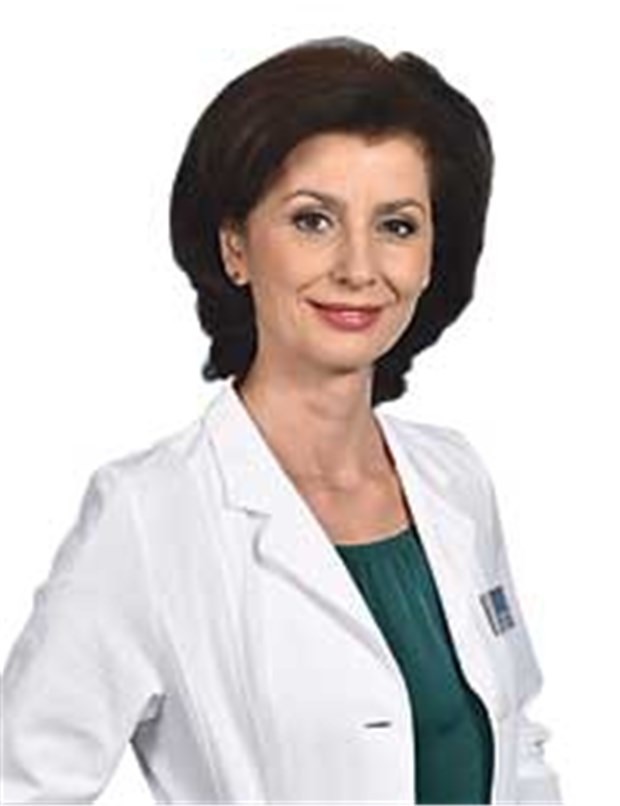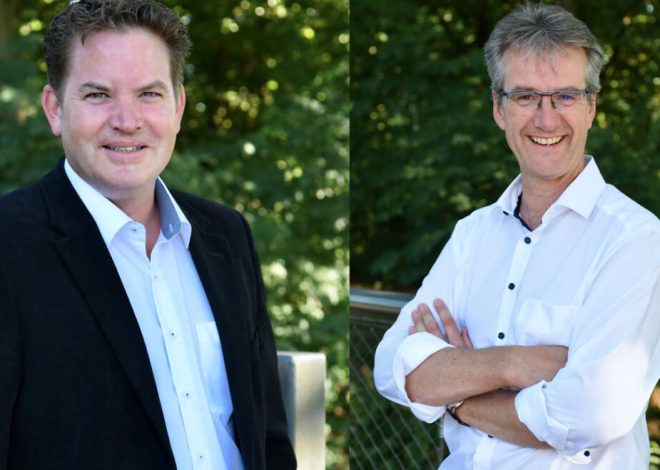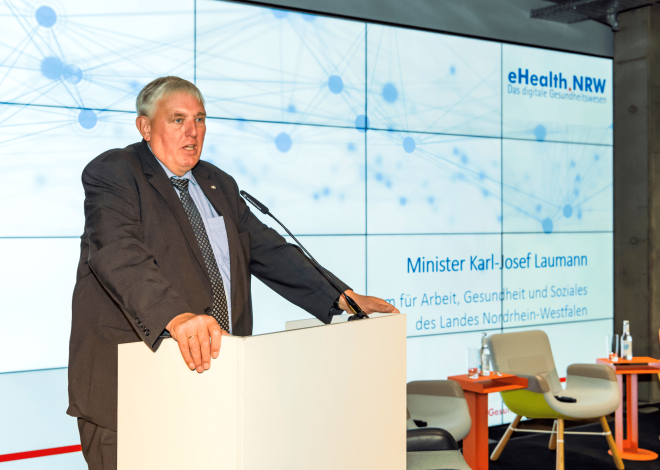
The played world of young doctors
ERFURT. The wound is artistically painted in different shades of red, all medical utensils are ready and the actors Roy Peter Link, Jane Chirwa and Tilman Pörzgen know their positions and procedures.
Only one person has to think and act little: Erdal Yildiz plays an injured man and lies in the hospital bed in front of the doctors. He was admitted with head trauma. Then it starts. “Attention” and “Quiet please” are the instructions from the small side room of the control room.
Rehearsals for a scene from episode 53 of “In All Friendship – The Young Doctors”. The patient is cared for after an accident in the emergency room at the Johannes Thal Clinic in Erfurt.
A teenager bursts into the scene and wants to know what’s going on with his stepfather who died in an accident. Two cameras record dialogues, looks and movements. Then the word “Abort” sounds.
New color for the wound
Not far from the set, director Jan Bauer looks critically into two monitors. His eyes and those of his assistant and two make-up artists carefully watch every movement and every word.
Two medical consultants are watching in the background. One of them is Katrin Jokubeit, who checks that everything is going well between the emergency room and the operating room on the series almost every day of filming.
In this scene she has no objections, but director Bauer has one wish: the injury on the boy’s face looks too dry in the light. The make-up artist applies new paint to make the wound look freshly bleeding.
It continues. The sample becomes a picture, scene 53-3 with blood pressure measurement, cuff, stethoscope and flashlight, as it is detailed in the daily disposition. The episode will be shown on ARD at some point in May.
After four repetitions, the timing is right between the actors, who have to learn the medical maneuvers and procedures in just a few minutes every day.
Sometimes someone forgets to put the IV from the stand onto the bed when the patient is pushed out of bed. Sometimes someone has gloves on and in the next picture they don’t. Every detail is important, but there are always compromises.
For example, patient Yildiz’s head with his skull injury is not lying flat in bed, but rather slightly elevated. This is not entirely medically correct, but otherwise the camera cannot see the patient.
Effect before logic
Effect takes precedence over logic here. Junior producer Benjamin Zwanzig sees no contradiction in this. “Realism should never get in the way of the story; in the end it has to be a good story. If we shorten, lengthen or move something here and there, then it’ll be fine.”
While the scene in the emergency room’s shock room is being filmed in two more shots, Katrin Jokubeit is preparing the next scene in the clinic’s operating room.
“The demand for medical accuracy is very high in the series. It is important to everyone that everyday hospital life is portrayed as close to reality as possible,” says the trained nurse and operating room nurse, who now works as a naturopath nearby from Weimar works.

Nothing works without film blood.
© Jens HaentzscheL
“Of course there are compromises, for example when it comes to timing. An operation always takes longer in reality than on TV.”
Jokubeit looks after the television actors and the directing team with all medical questions. When she doesn’t know what to do, other colleagues like Claudia Lipp, a former operating room nurse, come to the set. Aneurysm surgery is scheduled to begin today.
“Op scenes are particularly difficult because it’s not just about a lot of visual details, but also about the right content,” explains Jokubeit. And sentences like: “The Sylvian fissure between the forehead and the temporal lobe is now open” or “Indocyanine green over the venous catheter”.
Technical terms should not be missing
Not an easy text for the actors who move here and there in alien galaxies like the crew of the starship Enterprise. And yet technical terms cannot be missing.
“The viewers want the doctors to just bash each other with technical terminology. Nothing has to be understood. As a viewer, you want to have the feeling that the characters in the series are being helped and that the doctors know their stuff. They have to “Don’t understand the technical terms, but if they aren’t there, then they’re missing something,” says Zwanzig.
The evening series “In All Friendship – The Young Doctors” has been running every Thursday at 6:50 p.m. on Erste for a year now. The series is a notable success in an early evening program that has sometimes been cited as an “ejector seat” and sometimes as a “death zone.” That was long ago.
With the young, dynamic offshoot of the ARD classic “In aller Friendship” with its well over 700 episodes, the makers achieve ratings of between nine and ten percent, which corresponds to a market share of 2 to 2.4 million viewers. After the first season with 42 episodes, the second season is now being worked on.
More light than in the clinic
The spin-off is filmed on an area of several thousand square meters in the children’s media center in Erfurt. In just a few months, the Johannes Thal Clinic was built here with its many medical rooms, but also the apartments of its protagonists.
Production designer and film architect Mathias Heinze had around ten months to create the film clinic. He traveled all over Germany to find out about everyday hospital life.
The equipment in the operating room is all original, as are the infusions, tubes, bandages and plasters. The filmmakers only created their own models for the syringes, because they are already part of the special effects.
In three months, the clinic was created in the studio with the fake address Bachallee 14. “There is a template that we need in a fictional hospital series in order to work perfectly with light and camera.
Light boxes in the walls
There are the wider corridors and doors, then light boxes in walls and many external windows that you don’t notice and that wouldn’t exist in the real hospital, but they help us because they mean we have several light options,” says Zwanzig.
“In the end, you get the best of all worlds in order to recreate everyday hospital life as faithfully as possible.”
This is now also really happening in the film world. The operating room is prepared. Erdal Yildiz lies quietly in the room and hangs on various devices that measure computer-controlled heart and breathing rates, but also oxygen saturation and blood pressure.
A make-up artist is applying make-up to a small wound on the back of the hand. Claudia Lipp connects cables to the devices and places them near the patient so that everything looks real.
Gaffers look for the light, cameraman Andrew Strokes goes through his movements, as does director Jan Bauer, who has already directed the successful BBC medical series “Holby City” with Strokes in England.
“Imaginary vision of a hospital”
“The difference between Germany and England lies primarily in social perception. At the BBC, things are much more naturalistic. The hospital is a reflection of society.
In Germany, the depiction of the hospital is more of a wishful image,” says Bauer. The specialist consultants are immensely important to him, even if he affectionately and ironically refers to them as the “sabotage department”, because every now and then there are delays, precisely because of the specialist consultants explain or show the final processes.
“Medical professionals are involved in the series very early on,” reports Jokubeit, who is currently explaining to actress Anja Nejarri a medical device that the young doctor uses to open the sylvian fissure in question a short time later.
“The scripts are written and proofread by various specialist consultants. This all usually happens in Berlin. A consultant is also involved in developing the stories. Here on site, a colleague of mine reads the finished books again and corrects dialogue if necessary. I also read all the scripts for plausibility. The final opportunities for corrections are made directly on the set when it comes to how the doctors have to act in the picture.”
Things get serious for picture 53-11. All rehearsals have been completed, Katrin Jokubeit and Claudia Lipp are looking at the monitors. Again it says “Quiet please”. After the day of filming is already before the day of filming. Also for Katrin Jokubeit, who has already sorted all the devices for the next day.
Agisheva in an interview: Medical advisors are a great help
Marijam Agischewa plays the head doctor Professor Karin Patzelt in the series “In aller Friendship”. This is a dream role for the Chinese-born actress: she also works as a naturopath.
The interview was conducted by Jens Haentzschel
Doctors newspaper: You were a nurse at the Bülowbogen Practice, and now you are the head doctor. It seems like you’re the perfect medical assistant on set?

Marijam Agischewa is, among other things, an alternative practitioner for psychotherapy and has worked at the “Pain Center Berlin”.
© André Kowalski / Saxonia Media
Mariyam Agisheva: It just sounds like it, but I’ve actually been asked about histamine intolerance. At least I could give you some information.
It’s just good to know something and be able to use Latin terms. You lose your shyness more quickly because you have already learned many terms for an exam.
What is easier for you than for others?
Mariyam Agisheva: If you have five long Latin terms in a sentence and it sounds like “Give me five rolls”, then you always have to take a breath. It’s the same for all my colleagues, but my practical experience helps.
Why are medical series so popular with viewers?
Mariyam Agisheva: Honestly, I don’t know, but it’s a topic that everyone has dealt with at some point. Everyone has been to the doctor or hospital.
There are wishes about how it should be and our clinic is a consistently positive place. It is a fantasy world that viewers enjoy entering.
Does the role as a doctor change the way we view illnesses?
Mariyam Agisheva: In individual cases yes. Most things have nothing to do with, they are exotic and unusual cases.
But sometimes you think that this disease can be treated either way. I did not know that. The horizon definitely expands.
How were you prepared for the role?
Mariyam Agisheva: We were in the hospital several times before filming began and received lengthy training. We had to practice surgical sutures, do ultrasounds and put on syringes.
At the Johannes Thal Clinic, our television clinic, we are pretty much based on reality. There are medical advisors. Everything looks very authentic.
What is the importance of the specialist advisors?
Mariyam Agisheva: They are a great help in playing the role more understandably. We practice the sequences before every scene. The specialist advisors keep a very watchful eye, for example if you handle something wrong.
This will then be changed immediately. Sometimes they give us tricks because we’re busy with the dialogue and have to concentrate on the camera and lighting. There’s a lot to consider in just a few minutes.
How do you view medical series – because there is a wide range?
Mariyam Agisheva: As is well known, a lot of things are a matter of taste, but for me some US medical series sometimes feel too fast and hectic. I like it when you tell people how something comes about, how you deal with it and how it ends.
What do you think has changed the most in terms of content?
In the past it was more about private stories, for example the “Bülowbogen Practice” was less about medical matters.
In “In All Friendship – The Young Doctors” the medical cases are more in the foreground, but of course everything is entertainment and life and its stories are part of it.

Ethel Purdy – Medical Blogger & Pharmacist
Bridging the world of wellness and science, Ethel Purdy is a professional voice in healthcare with a passion for sharing knowledge. At 36, she stands at the confluence of medical expertise and the written word, holding a pharmacy degree acquired under the rigorous education systems of Germany and Estonia.
Her pursuit of medicine was fueled by a desire to understand the intricacies of human health and to contribute to the community’s understanding of it. Transitioning seamlessly into the realm of blogging, Ethel has found a platform to demystify complex medical concepts for the everyday reader.
Ethel’s commitment to the world of medicine extends beyond her professional life into a personal commitment to health and wellness. Her hobbies reflect this dedication, often involving research on the latest medical advances, participating in wellness communities, and exploring the vast and varied dimensions of health.
Join Ethel as she distills her pharmaceutical knowledge into accessible wisdom, fostering an environment where science meets lifestyle and everyone is invited to learn. Whether you’re looking for insights into the latest health trends or trustworthy medical advice, Ethel’s blog is your gateway to the nexus of healthcare and daily living.


